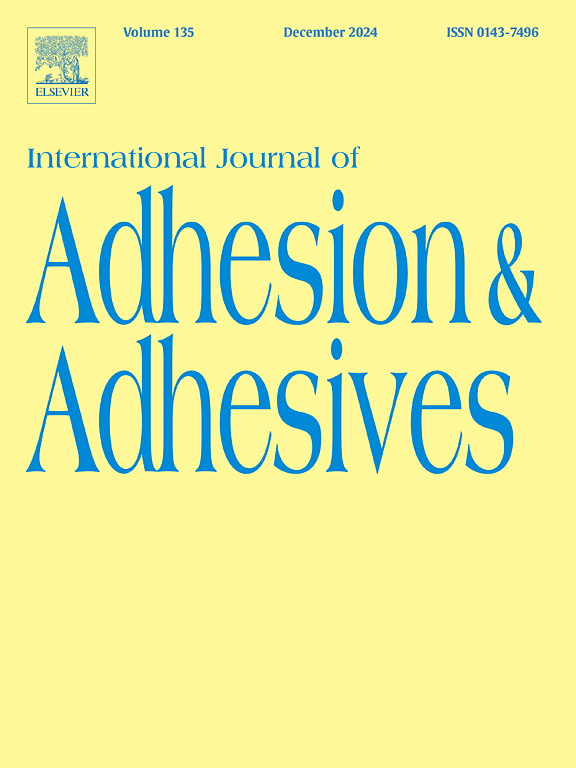粘接时指法粘稠
IF 3.2
3区 材料科学
Q2 ENGINEERING, CHEMICAL
International Journal of Adhesion and Adhesives
Pub Date : 2025-02-05
DOI:10.1016/j.ijadhadh.2025.103960
引用次数: 0
摘要
由于现代轻量化设计采用多材料施工方法,加之胶粘接技术的使用,在固化过程中,接合构件之间会产生热致相对位移。其结果是,原有的粘结面积明显减少,呈现出蜿蜒的结构。这种结构,一旦固化,可以导致增加应力积聚在关节由于减少粘接面积和缺口效应。这项工作的重点是一个被称为“粘性指法”的问题的实验表征和数值描述。为了研究这一点,使用不同位移下的对接接头试件(BJS)和LWF-KS2试件,实验研究了粘合剂表面减少。此外,利用计算流体动力学(CFD)进行了两相流体模拟,以预测粘接表面的形成。采用有限元法对粘接接头的粘接表面减少进行了分析,并对粘接接头的力学性能进行了模拟。本文章由计算机程序翻译,如有差异,请以英文原文为准。
Viscous fingering in adhesive bonding
Due to the adoption of multi-material construction methods in modern lightweight design, along with the use of adhesive bonding technology, thermally induced relative displacements between the joining components arise during the curing process. As a result, the original bond area is significantly reduced and exhibits a meandering structure. This structure, once cured, can lead to increased stress buildup in the joint due to the reduced adhesive area and the notch effect.
This work focuses on the experimental characterization and numerical description of a problem known as “viscous fingering”. To investigate this, adhesive surface reduction is experimentally investigated using a butt-bonded joint specimen (BJS) and an LWF–KS2 specimen at various displacements. Additionally, two-phase fluid simulations are carried out using computational fluid dynamics (CFD) to predict the formation of the adhesive surface. The finite element (FE) method is also used to analyze the adhesive surface reduction and simulate the mechanical properties of the bonded joint.
求助全文
通过发布文献求助,成功后即可免费获取论文全文。
去求助
来源期刊

International Journal of Adhesion and Adhesives
工程技术-材料科学:综合
CiteScore
6.90
自引率
8.80%
发文量
200
审稿时长
8.3 months
期刊介绍:
The International Journal of Adhesion and Adhesives draws together the many aspects of the science and technology of adhesive materials, from fundamental research and development work to industrial applications. Subject areas covered include: interfacial interactions, surface chemistry, methods of testing, accumulation of test data on physical and mechanical properties, environmental effects, new adhesive materials, sealants, design of bonded joints, and manufacturing technology.
 求助内容:
求助内容: 应助结果提醒方式:
应助结果提醒方式:


